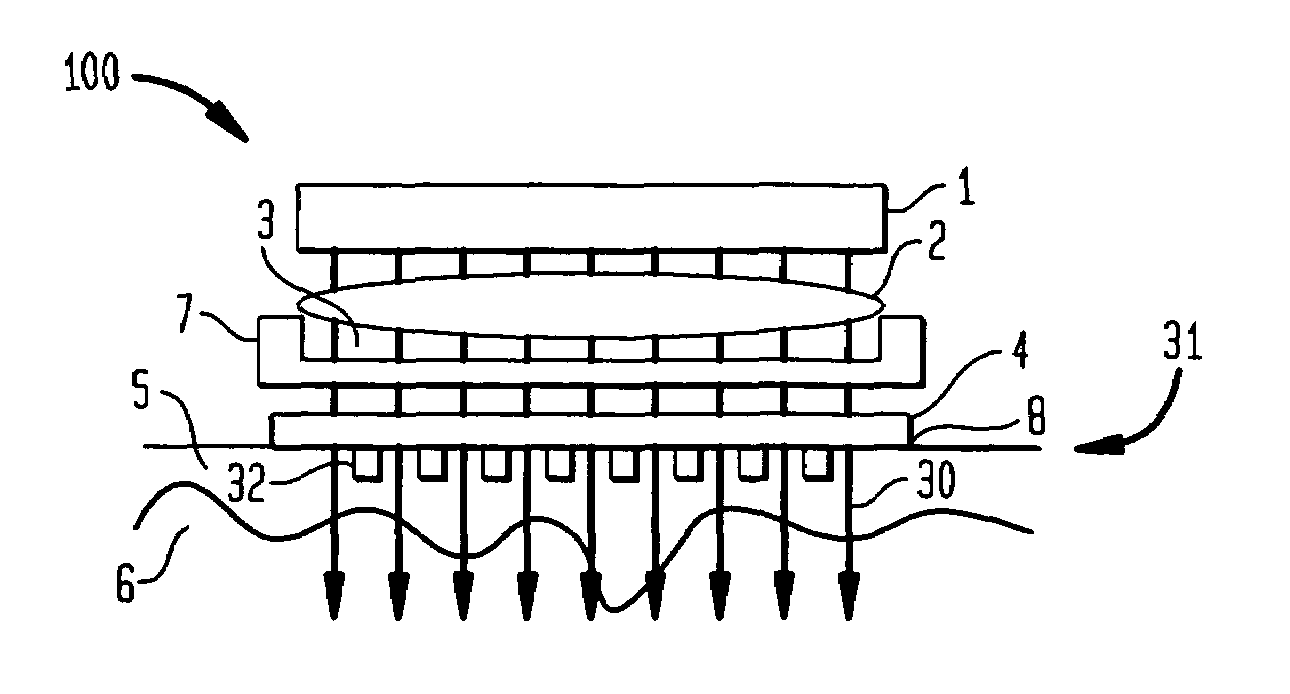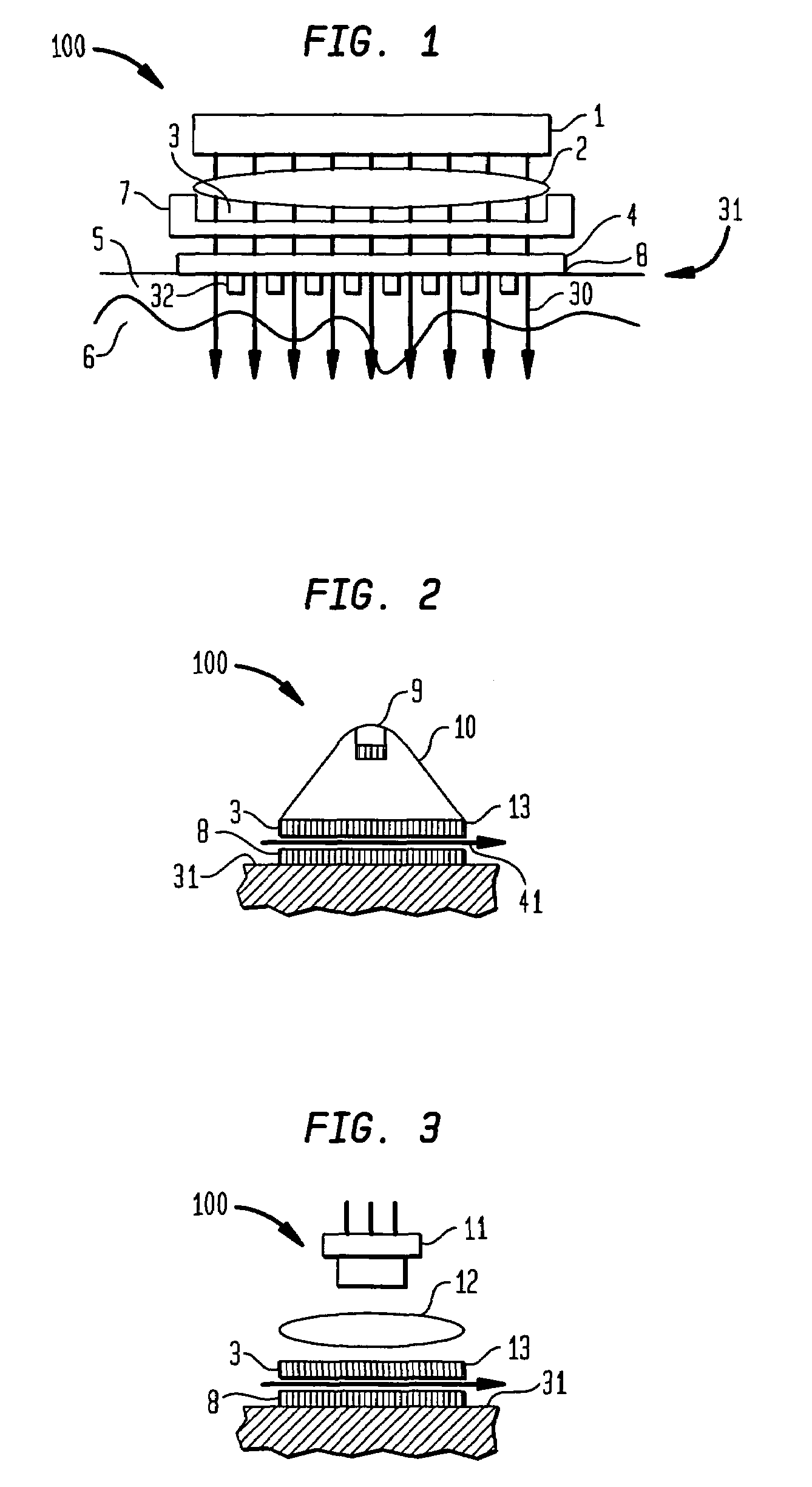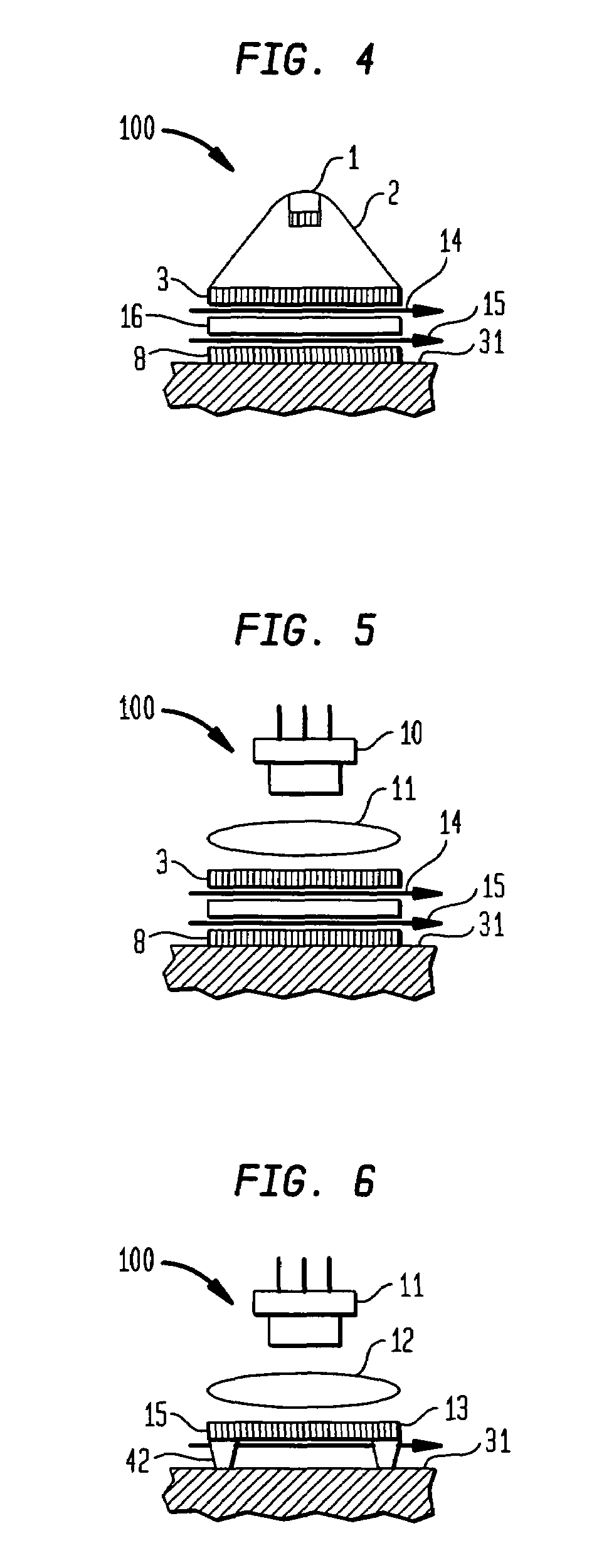Method and apparatus for photothermal treatment of tissue at depth
a tissue and photothermal treatment technology, applied in the field of tissue photothermal treatment methods and equipment, can solve the problems of little radiation reaching the tissue at depth, water absorption, etc., and achieve the effects of effective tissue protection, rapid maximum heat, and high energy
- Summary
- Abstract
- Description
- Claims
- Application Information
AI Technical Summary
Benefits of technology
Problems solved by technology
Method used
Image
Examples
example 1
[0067]This example illustrates theoretical calculations corresponding to one embodiment of the invention as applied to human skin.
[0068]Initially, a model of the skin was prepared. This model included two layers of tissue possessing distinct optical and thermal properties: dermis and subcutaneous fat (FIG. 10). The presence of fine structures such as the basal layer and the vessel plexus was neglected. Monochromatic light was assumed to be incident normal to the surface. The input power density was designated as F0. Both the surface temperature (Ts) at depth z=0 and the bottom temperature (Th) at depth z=h were kept fixed at prescribed levels. Specifically, Th was set at 37° C. due to the temperature stabilization effect of blood and metabolic heat generation on muscle tissue. The objective of this example was to evaluate the steady-state temperature distribution within the skin and to find the characteristic depth zmax where the steady-state temperature reaches a maximum.
[0069]Star...
example 2
[0090]The following prophetic example illustrates treatment parameters for different body layers that may be used in one embodiment of the invention, as applied to human skin.
[0091]Based on the calculation illustrated in Example 1, treatment parameters for different layers of the body that may be used in one embodiment of the invention can be determined. These calculations are summarized in Table 1. The body layers model includes the reticular dermis, dermis subcutaneous fat junction, and subcutaneous fat layer.
[0092]Using a broad-spectrum lamp in this embodiment of the invention, the treatment parameters include a surface cooling mechanism able to maintain a surface cooling temperature of between 0° C. and 32° C.; a broad-spectrum lamp, where the color temperature of the lamp is between 300 K and 3000 K, with filtering of more than 50% of the light having wavelengths of less than 800 nm and greater that 1800 nm, preferably 900 to 1400 nm, and most preferably 1100 to 1250 nm. Depend...
example 3
[0096]In this example, a device 100 of this invention substantially as shown in FIG. 2 was used to heat subcutaneous fat in the stomach region of a volunteer. Light from a halogen lamp 9 was filtered with a combination of a short cut or high pass filter 8 with an 800 nm cut-off and a 3 mm thick water layer 41. The temperature of water 41 was 12° C., while the temperature of a sapphire plate 8 and of the skin interface was 18° C. Power density was 4 W / cm2 and the treatment time was 300 sec. After heating the subcutaneous fat layer for 300 sec., the device was removed, and two thermocouples were immediately implanted 1 mm and 8 mm below the skin surface under the heated region to determine the final, steady-state temperatures and to monitor the temperature relaxation profiles in the dermis and fat layer respectively. Temperature data recorded by the two thermocouples are shown in FIG. 12. The initial temperatures of the subcutaneous fat layer at a depth of 8 mm was found to be approxi...
PUM
 Login to View More
Login to View More Abstract
Description
Claims
Application Information
 Login to View More
Login to View More - R&D
- Intellectual Property
- Life Sciences
- Materials
- Tech Scout
- Unparalleled Data Quality
- Higher Quality Content
- 60% Fewer Hallucinations
Browse by: Latest US Patents, China's latest patents, Technical Efficacy Thesaurus, Application Domain, Technology Topic, Popular Technical Reports.
© 2025 PatSnap. All rights reserved.Legal|Privacy policy|Modern Slavery Act Transparency Statement|Sitemap|About US| Contact US: help@patsnap.com



